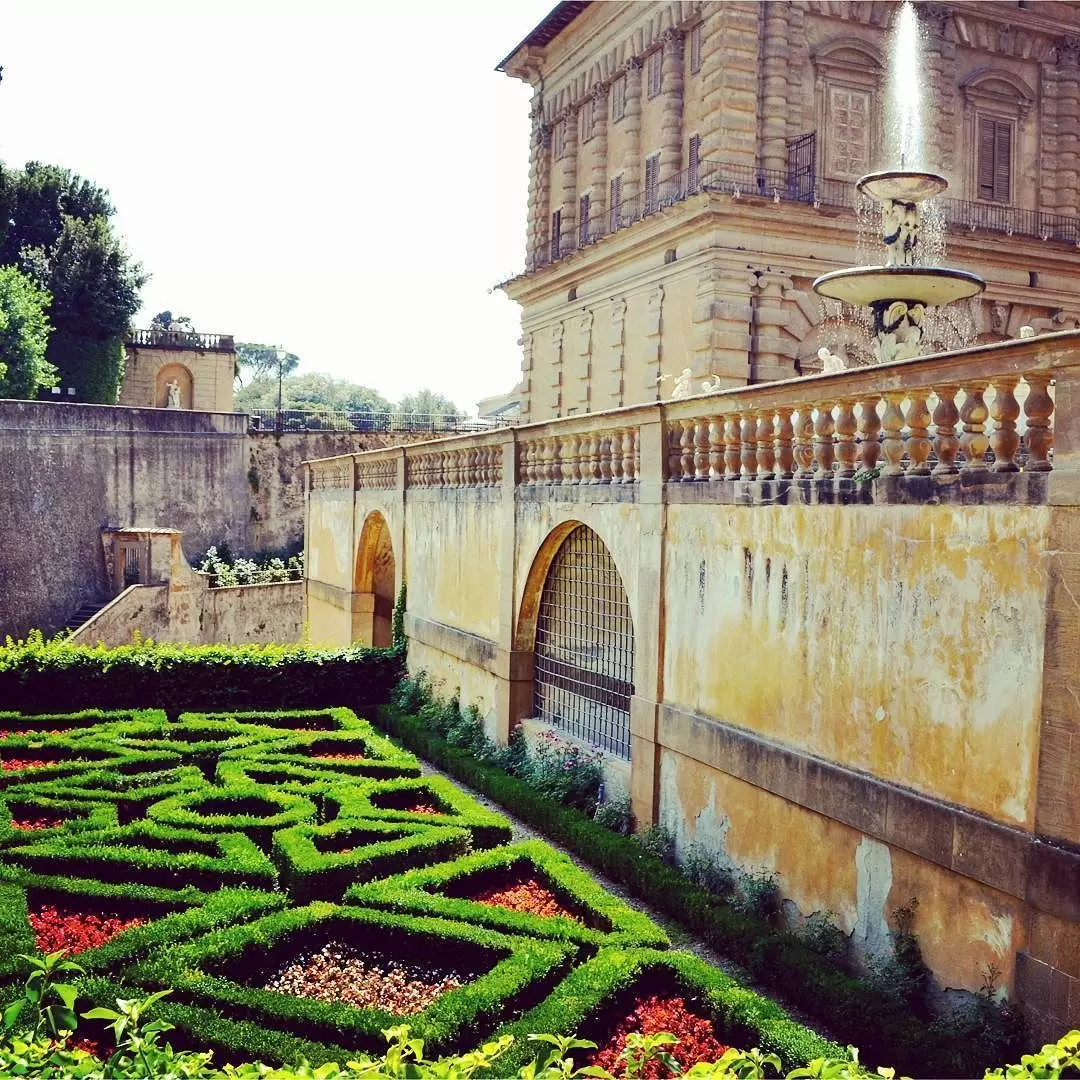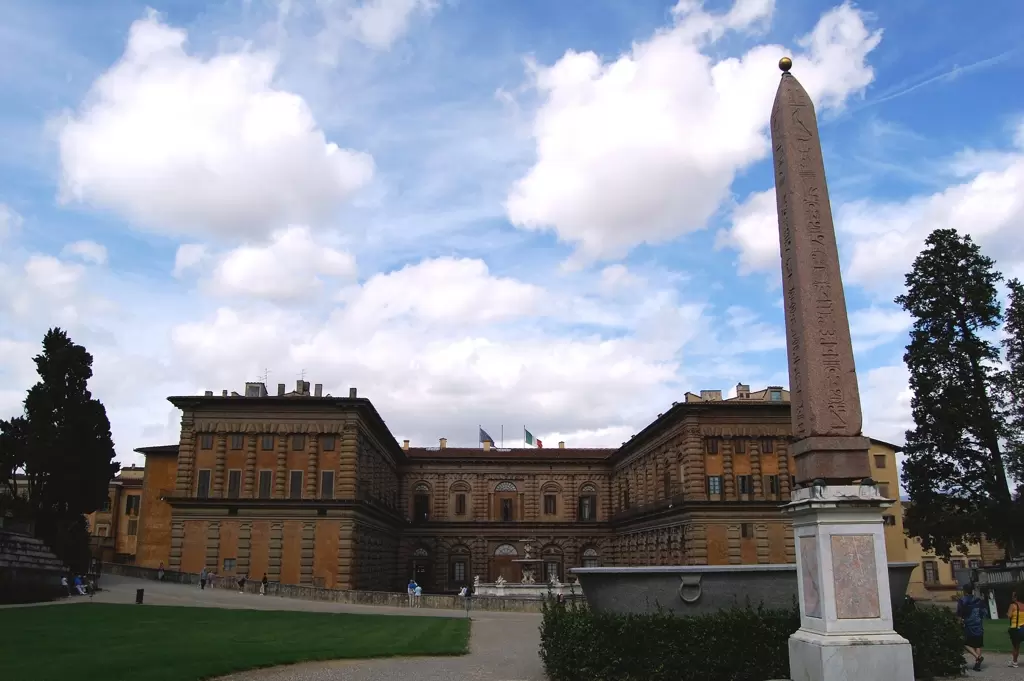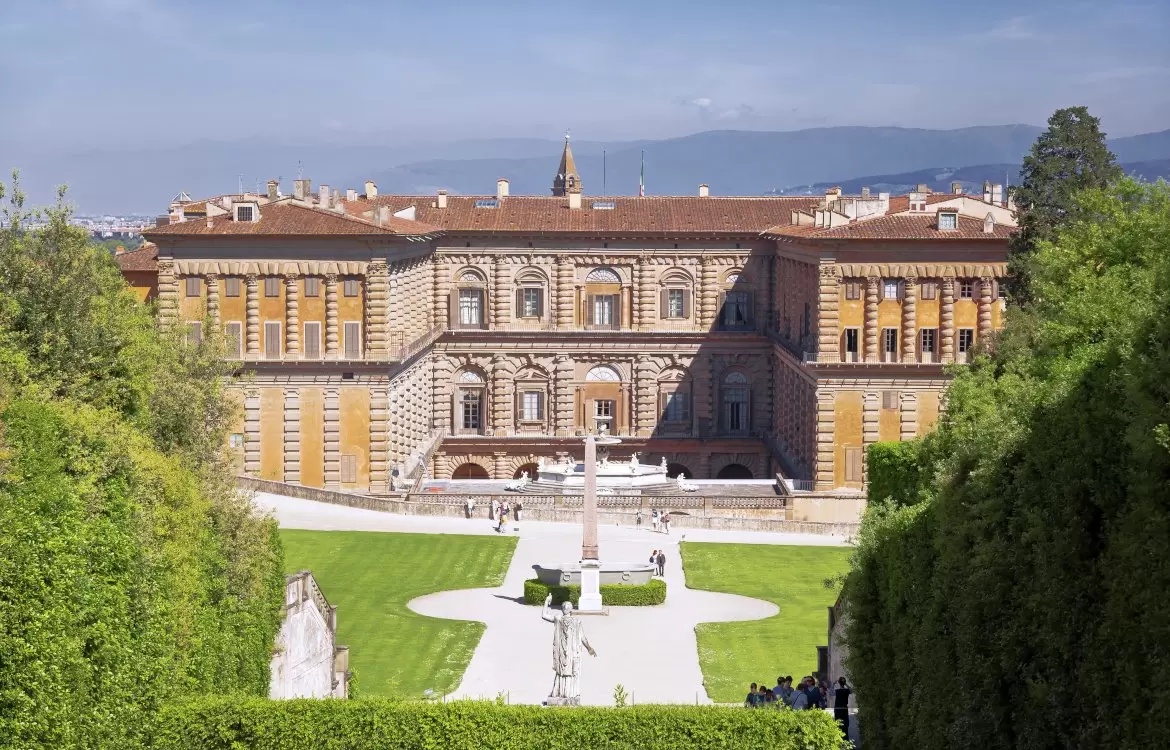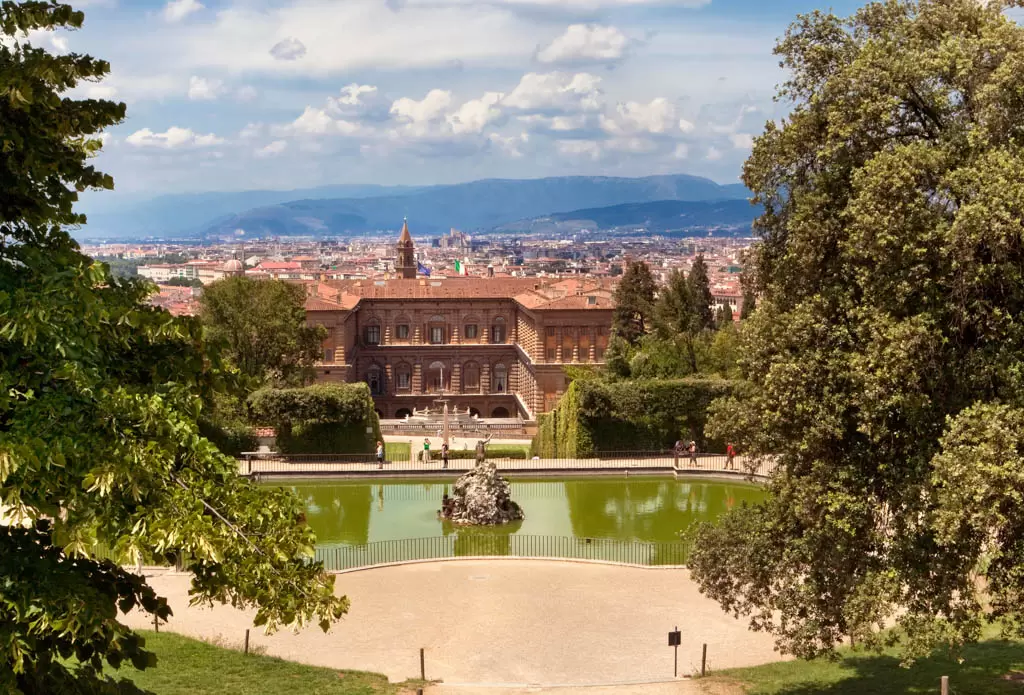Palazzo Pitti is one of the most famous tourist attractions in Florence. However, this historic building is not only famous for its interior, but also for its magnificent gardens. The Boboli Gardens are located behind Palazzo Pitti and were designed by the Medici family in the 16th century. These gardens are one of the best examples of Italian garden design and offer visitors a historical journey. The gardens have walking paths filled with ancient sculptures, fountains, ponds, and flowers. Additionally, there is a terrace at the highest point of the gardens where visitors can enjoy a view of Florence. The Boboli Gardens are a must-see attraction in Florence and offer visitors an unforgettable experience.
Boboli Gardens of Palazzo Pitti: A Historical Heritage

Palazzo Pitti is one of the most important tourist attractions in Florence. This historic building was built in 1458 by Luca Pitti, a member of the Medici family. Later, it was purchased by the Medici family and turned into a large palace. Palazzo Pitti is now used as a museum and contains many works of art and historical objects.
One of the most important features of Palazzo Pitti is the Boboli Gardens. These gardens were designed by the Medici family in the 16th century and are one of the largest gardens in Florence. The Boboli Gardens are one of the best examples of Italian garden design and are decorated with many sculptures, fountains, and other works of art.
The Boboli Gardens are full of wide paths, ponds, flower gardens, and wooded areas where visitors can enjoy a pleasant walk. One of the most famous sections of the gardens is the Grotta del Buontalenti. This section is a cave built in the 16th century and contains many sculptures and frescoes.
The Boboli Gardens are one of the most important tourist attractions in Florence and are visited by thousands of tourists every year. These gardens are considered one of the best examples of Italian garden design and are preserved as a historical heritage. Palazzo Pitti and the Boboli Gardens are an important part of Florence's rich historical and cultural heritage and offer visitors an unforgettable experience.
Boboli Gardens: Florence's Secret Paradise
Florence is one of the most beautiful cities in Italy. The city is famous for its historical and cultural heritage, art works and architecture. However, one of the most beautiful places in Florence is the Boboli Gardens. These gardens are known as the hidden paradise of Florence.
The Boboli Gardens were built by the Medici family in the 16th century. The gardens cover an area of 45,000 square meters and are one of the most beautiful examples of Italian garden design. The gardens contain sculptures, fountains, ponds and historical buildings.
One of the most beautiful places in the gardens is the Grotta del Buontalenti. This place is a cave built in the 16th century and contains sculptures and frescoes. The gardens also contain historical buildings such as the Royal Palace, Pitti Palace and Bardini Gardens.
The Boboli Gardens are one of the most popular tourist attractions in Florence. The gardens can be visited all year round and have a different beauty in every season. Walking in the gardens is a great opportunity to discover the beauty of nature and see historical buildings.
The Boboli Gardens are known as the hidden paradise of Florence and offer visitors an unforgettable experience. The gardens are one of the most beautiful examples of Italian garden design and enchant visitors with their historical buildings, sculptures and natural beauty. Everyone who visits Florence should definitely see the Boboli Gardens.
The Gardens of Palazzo Pitti: The Meeting of Art and Nature

Palazzo Pitti is one of the most famous tourist attractions in Florence. This historic building was built in 1458 by Luca Pitti, a member of the Medici family. Palazzo Pitti is one of the most beautiful examples of Italian Renaissance architecture and houses many works of art. However, the gardens of Palazzo Pitti also have a separate beauty.
The gardens of Palazzo Pitti are one of the most beautiful examples of Italian garden design. The gardens were designed by the Medici family in the 16th century and have undergone many changes over time. The gardens reflect the architectural and artistic understanding of the Italian Renaissance. There are many areas in the gardens filled with sculptures, fountains, pools, and flowers.
The most important structure in the gardens is the Boboli Garden. This garden was built by the Medici family in the 16th century. The garden is one of the most beautiful examples of Italian garden design. There are many sculptures and fountains in the garden. In addition, there are many types of plants and flowers in the garden.
The gardens of Palazzo Pitti are a place where art and nature meet. The sculptures and fountains in the gardens reflect the beauty of art. In addition, the plants and flowers in the gardens reflect the beauty of nature. Therefore, the gardens of Palazzo Pitti offer visitors a fascinating experience.
In conclusion, the gardens of Palazzo Pitti are one of the most beautiful examples of Italian garden design. The gardens are a place where art and nature meet. The sculptures, fountains, pools, and flowers in the gardens offer visitors a fascinating experience. The gardens of Palazzo Pitti are a must-see attraction in Florence.
Boboli Gardens: One of Italy's Best Preserved Gardens

Boboli Gardens is a place located in the city of Florence, Italy, and is known as a historic garden. These gardens were built by the Medici family in the 16th century and are one of the best-preserved gardens in Italy.
Boboli Gardens cover an area of 45,000 square meters and offer visitors a historic atmosphere. The gardens contain sculptures, fountains, ponds, and historic buildings. One of the most important features of the gardens is the "giardino all'italiana" style, which is one of the best examples of Italian garden design and involves arranging gardens using regular geometric shapes and symmetry.
In addition to being a historic site, Boboli Gardens also offer visitors natural beauty. The gardens contain various plant species and trees. The most famous tree in the gardens is a cedar that has been standing for over 300 years.
One of the most important structures in the gardens is the Palazzo Pitti. This building was used as the palace of the Medici family and now serves as a museum. The gardens also contain historic buildings such as the Royal Palace, the Royal Chapel, and the Porcelain Museum.
Boboli Gardens, in addition to being one of the best-preserved gardens in Italy, offer visitors historic and natural beauty. The gardens are arranged in the "giardino all'italiana" style, which is one of the best examples of Italian garden design, and allows visitors to discover historic buildings and natural beauty.
The Gardens of Palazzo Pitti: The Best Examples of Renaissance Architecture

Palazzo Pitti is a palace located in Florence and is one of the best examples of Renaissance architecture. The palace gardens are also one of the best examples of Renaissance architecture.
The gardens were designed by the Medici family in the 16th century and were designed to emphasize the beauty of nature. The gardens are one of the best examples of Italian garden design and Renaissance architecture.
The gardens consist of many different sections, including the Boboli Gardens, the Royal Gardens, the Limonaia Gardens, and the Cactus Garden. The Boboli Gardens are the largest section of the gardens and include many sculptures, fountains, and pools. The Royal Gardens are the oldest section of the gardens and were used as the Medici family's private garden. The Limonaia Gardens were specially designed for lemon trees, and the Cactus Garden is home to the world's largest cactus collection.
The gardens are considered one of the best examples of Renaissance architecture because they were designed to emphasize the beauty of nature. The sculptures, fountains, and pools in the gardens were used to emphasize the beauty of nature. The gardens are one of the best examples of Italian garden design and Renaissance architecture.

Comments